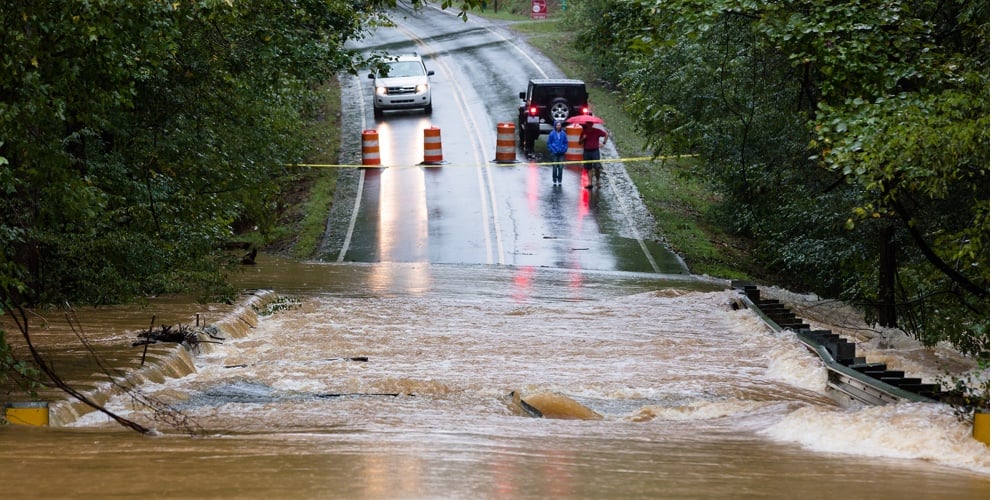3 steps to help move forward in the wake of a catastrophic event

The United States is no stranger to hurricanes. Hurricanes Barry and Dorian struck several months ago, Hurricanes Michael and Florence hit hard in 2018, and Hurricanes Harvey, Irma, and Maria brought devastation in 2017.
In the wake of a hurricane or any other catastrophic event, there is much work that needs to be done to recover. In some cases, the recovery process can take years. Damaged, lost, or repossessed collateral only complicates matters, with the assortment of state and regulations in place presenting challenges for both consumers and lenders. Each state has different directives relating to how a lender can and cannot handle these collateral recoveries and damage claims with borrowers.
Catastrophic events tend to have about a 6-9-month tail in terms of damage, so it is important to be prepared for them. Proper preparation allows you to perform damage control quickly, effectively, and in compliance with applicable law. Take these steps to help recover collateral and arm yourself against devastating losses prior to the next potential catastrophe:
- Follow Event and Exposure Updates
Having access to the right kind of information during a national catastrophe will give you an advantage in managing your financial losses and internal operations before, during, and after the catastrophe.
FEMA is a great resource for gathering what a particular state’s requirements are for dealing with borrowers. Many national catastrophe websites and blogs, such as FEMA Bulletins, NFIP Bulletins, and the CFPB, among others, offer guidance on how to deal with loan reinstatements, loan arrangements, collection activity, repossessions, and foreclosures.
Working with a vendor to share real-time updates and break down the impact on your loan portfolio can help you reduce catastrophe-related loss exposure, while at the same time costing your lending institution little to no time or labor resources. Your vendor will send reports, which can include vital information such as:
-
- Catastrophe Updates: Live updates relating to impacted areas all over the country, as provided by FEMA and other government agencies.
- Exposure Reports: After reviewing zip codes where a catastrophe has occurred, an exposure report identifying each consumer loan and property in an affected catastrophe area will be provided to you.
- Insurance and Emergency Bulletins: Bulletins will be provided from FEMA and the Federal Insurance Office and, concerning topics such as repossession activity, total loss protocols, impound and abandon requirements, salvage requirements and changes, and overall financial loan balance exposure in a given area.
- Exposure by Insurance Carrier: Receive potential collateral exposure information broken down by carrier, including information about which carriers are and are not able to honor all catastrophe claims.
- Utilize Insurance Tracking Data
Insurance tracking provides financial institutions timely assessment of their exposure stemming from catastrophes, including, but not limited to hurricanes, floods, wildfires, extreme storms, and hail. Lenders can also tie insurance carrier and policy information to the date damage ocurred and pursue claims. Recoveries on those claims can then be applied to borrowers’ deficiency balances, lowering exposure for your consumers.
Insurance information obtained by optimized tracking activity improves the efficiency and effectiveness of claim handling processes. In fact according to Allied data, it is estimated that about 80-85% of Allied’s claim recoveries are achievable as a result of information obtained from insurance tracking. This information is also essential in:
-
- Eliminating costly errors related to total loss valuations and settlements;
- Improving negotiations with insurance carriers;
- Protecting claims where the collateral is repairable;
- Providing consumers contact information to aid them in the negotiation of a total loss; and
- Reducing the time it takes to issue a letter of guarantee.
- Assess Collateral Value
Individual states’ varying regulations often cause lenders to incur extra expenses on impounded or abandoned collateral, and catastrophes only amplify this problem. Performing diligent inspections on all collateral can provide the data needed to determine whether it would be financially advantageous to secure or abandon each piece of collateral, significantly reducing this burden. In other words, with this information, you’ll vastly reduce the amount of time, money, and resources spent recovering vehicles not worth recovering.
Consider working with a vendor who will spend the time, money, and resources to handle collateral recoveries in a compliant fashion, so your lending institution remains protected against financial losses.
If you are interested in learning more, download our ebook, “What Happens After the Natural Catastrophe? Disaster Preparedness in 2019” here.

